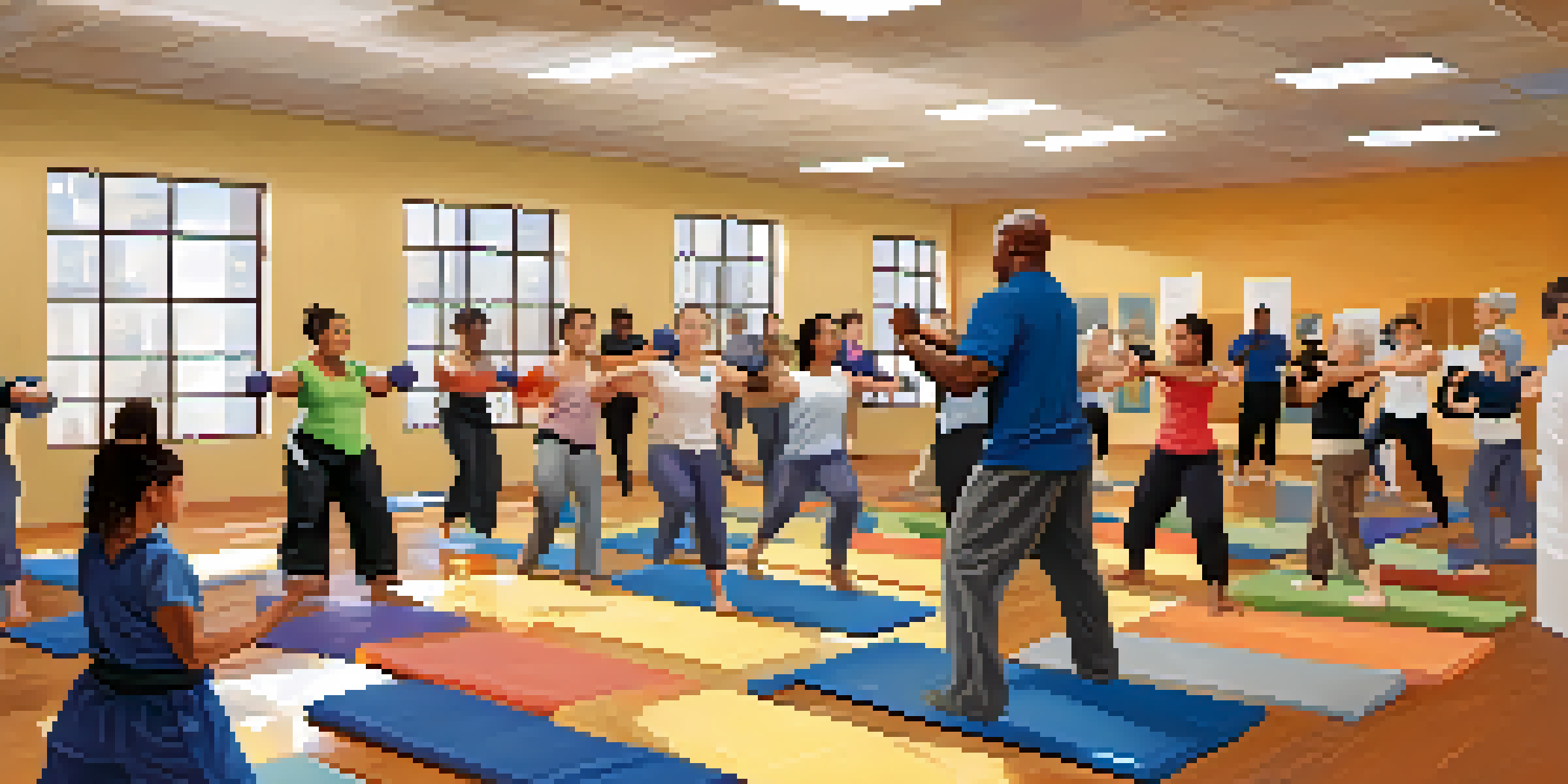Self Defense Myths: Top 10 Misconceptions Debunked

Myth 1: Self Defense is Only for the Strong
Many people believe that self-defense is a skill reserved for those who are physically strong. However, self-defense is more about technique and awareness than brute strength. For instance, smaller individuals can effectively use leverage and strategy to defend themselves against larger attackers.
The best defense is a good offense, but the best offense is often to avoid confrontation altogether.
It's essential to understand that self-defense techniques can be adapted based on the individual’s size and abilities. Training often focuses on using an opponent's force against them, which means anyone can learn to defend themselves effectively.
Ultimately, it's about confidence and knowledge rather than physical power. Anyone, regardless of their strength, can learn valuable self-defense skills.
Myth 2: You Need to Train for Years
There's a common misconception that self-defense training requires years of dedication. While advanced techniques do take time to master, basic self-defense skills can be learned relatively quickly. Even a few classes can equip you with crucial knowledge about personal safety and defense.

Short-term training programs focus on practical techniques that everyone can use in real-life situations. This accessibility means that even those with busy schedules can find time to learn.
Self-Defense is for Everyone
Self-defense skills can be learned by anyone, regardless of size, gender, or fitness level.
In many cases, just knowing a few simple moves can significantly increase your chances of escaping a dangerous situation.
Myth 3: Self Defense is Only for Women
The idea that self-defense is primarily a women's issue is misleading. While it's crucial for women to learn self-defense, men can also benefit greatly from training. In fact, anyone can become a potential target regardless of gender, making self-defense knowledge essential for everyone.
Self-defense is not just about protecting oneself physically; it's about being aware and prepared for any situation.
Self-defense classes are designed to empower people of all genders, teaching them how to react in threatening situations. This inclusivity not only enhances personal safety but also fosters a supportive community.
Encouraging self-defense training for all can help break down stereotypes and create a safer environment for everyone.
Myth 4: Self Defense is About Fighting
Many people think self-defense is all about combat and fighting techniques. In reality, self-defense emphasizes avoidance and de-escalation first. The primary goal is to escape a dangerous situation rather than engage in a fight.
Training often includes strategies for recognizing potential threats and safely navigating away from them. This proactive approach can be far more effective than physical confrontation.
Training Doesn't Take Years
Basic self-defense techniques can be acquired quickly, making training accessible to busy individuals.
In essence, self-defense is about protecting yourself, and that often means prioritizing your safety over proving your fighting skills.
Myth 5: All Self Defense Techniques Are Effective
It's a common belief that every self-defense technique will work in any situation. However, the effectiveness of a technique often depends on the circumstances and the individuals involved. Some moves that work well in a controlled environment might not be as effective in real-life scenarios.
Choosing the right technique requires understanding the context and the opponent. That's why training scenarios often mimic real-world situations to prepare individuals better.
Ultimately, what works for one person may not work for another, highlighting the importance of personalized training.
Myth 6: You Have to Be in Great Shape to Defend Yourself
Another myth is that you need to be in peak physical condition to defend yourself. While fitness can enhance your performance, many self-defense techniques rely more on skill than physical fitness. With the right training, even those who don’t consider themselves athletic can learn effective self-defense.
Self-defense training often accommodates various fitness levels, focusing on techniques that can be applied by anyone. This inclusivity encourages people to engage and learn, regardless of their current physical state.
Avoidance is Key
The primary goal of self-defense is to escape dangerous situations rather than engage in combat.
The key takeaway is that self-defense is accessible to all, regardless of fitness level.
Myth 7: You Should Always Fight Back
A popular belief is that you should always fight back when attacked. However, this isn't necessarily true. In many situations, the safest option is to comply or evade rather than engage, especially if the attacker is armed or significantly stronger.
Self-defense training teaches individuals to assess each situation critically, weighing the risks and potential outcomes before reacting. Sometimes, avoiding conflict altogether is the smartest move.

Listening to your instincts is crucial; if a situation feels too dangerous, finding a way to escape is often the best strategy.
Myth 8: Self Defense is Only for Urban Areas
Many assume that self-defense is only necessary in urban areas where crime rates are higher. However, threats can arise anywhere, including suburban and rural settings. It's crucial to be prepared and aware of your surroundings, no matter where you are.
Self-defense skills are valuable in various situations, whether you're walking in a quiet neighborhood or traveling. Awareness of your environment can help reduce risks, making self-defense training a universal necessity.
Ultimately, self-defense is about being proactive and prepared, regardless of your location.